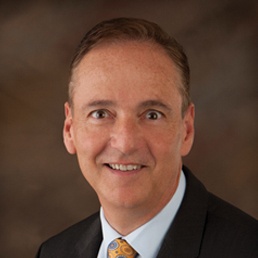Any time there are fears of an outbreak, you can be sure of one thing: Purveyors of disinformation will take advantage of these fears by spreading false, often harmful messages.
Coronavirus (COVID-19) is no different, and as what may become the first widespread U.S. public health crisis of the social media era, is likely to be more susceptible to disinformation and conspiracy theories than previous events. For example, some of the more notable falsehoods about COVID-19 include that drinking bleach can cure it, and that the virus is a biological weapon built by China. These assertions are simply not true and it reminds us all of the importance of providing accurate, timely and effective communication to the public.
Before going any further, it’s worth taking some time to review a few key facts about COVID-19 from the Centers for Disease Control and Prevention (CDC):
Current risk assessment:
– For most people, the immediate risk of being exposed to the virus that causes COVID-19 is thought to be low. This virus is not currently widespread in the United States.
– People in places where ongoing community spread of the virus that causes COVID-19 has been reported are at elevated risk of exposure, with an increase in risk dependent on the location.
– Healthcare workers caring for patients with COVID-19 are at elevated risk of exposure.
– Close contacts of persons with COVID-19 also are at elevated risk of exposure.
– Travelers returning from affected international locations where community spread is occurring also are at elevated risk of exposure, with an increase in risk dependent on the location. Symptoms include fever, cough and shortness of breath.
– People experiencing those symptoms at this time are only thought to be at risk of the disease if they have been in close contact with a person known to have COVID-19 or have recently traveled from an area with the ongoing spread of the disease.
To keep yourself and others healthy, the CDC recommends washing your hands often with soap and water, avoiding touching the eyes, nose or mouth with unwashed hands and staying home when sick.
What may happen:
– More cases of COVID-19 are likely to be identified in the coming days, including more cases in the United States.
– It’s also likely that sustained person-to-person spread will continue to occur, including throughout communities in the United States.
– It’s likely that at some point, the widespread transmission of COVID-19 in the United States will occur.
For health plans, situations like those surrounding COVID-19 present a challenge: namely, how to communicate important information to members in a timely manner during a rapidly changing emergency situation. While sometimes complex to manage for health plans, emergency communications do offer a tangible benefit to members, who are likely to feel more loyalty towards an organization that delivers outreach that prioritizes their safety, needs, and well-being.
Basics of emergency communication
Most importantly, member outreach during an emergency must be timely, personalized and relevant in order to build member trust and confidence. Additionally, health plans should aim to engage with members via their preferred channels of communication and include multiple touchpoints.
To this end, it’s important to analyze population demographics and psychographics to determine the channels most likely to produce responses. For example, our experience indicates that Medicaid populations are most likely to respond to a combination of text messages and mobile phone calls.
Finally, emergency outreach communications should deliver forward-looking information, so that during the event, members are thinking about what actions they should take next.
Previous experience informs today’s approach
While we’ve yet to fully appreciate the scale of COVID-19, we can look to previous events requiring emergency member communication for possible approaches. For example, in advance of severe weather events (such as hurricanes) that may cause significant disruptions to daily life, health plans often reach out to members with medication refill reminders. Quarantines related to COVID-19, which have already been ordered in several regions, may likewise create a similar need for medication reminders.
Prior to Hurricane Irma, one large health plan sought to contact members in areas of Alabama, Georgia and South Carolina that were at-risk of being in the hurricane’s path. The purpose of establishing contact was to help members fill prescriptions for needed medications prior to a potential evacuation. Specifically, outreach targeted more than 800,000 members with acute and chronic conditions (such as diabetes and HIV) who were likely to run out of medications within two weeks.
Utilizing phone calls and text messages, the plan delivered members timely information about medication refills, storm evacuation routes and other preparation information. Completed in two days, outreach efforts reached 24% of the population directly while leaving messages for 64%.
This effort highlighted the insurer’s ability to deliver rapid responses in an emergency situation. The plan not only sent members medication notifications in a timely manner, but also sent important information about the storm and evacuation processes to help members care for their families. Like many outreach programs, this one produced high satisfaction and member experience results. In fact, our research indicates that up to 84% of members who obtain engagement outreach services find the information valuable.
Emergency outreach best practices
Years of experience with member emergency outreach have yielded the following best practices:
– Target populations to ensure message relevance and avoid unnecessary disruption.
– Be prepared for common post-disaster questions, such as inquiries regarding emergency updates and access to healthcare, roadways, food and water.
– When time permits, use multiple channels to engage.
Crisis communications can be most effective as part of a comprehensive engagement program. Members who have received messaging in the past are more likely to engage.
There is a lot we still don’t know about COVID-19, but we can begin to prepare for the possibilities of what lies ahead. Similarly, while health plans may not yet know the content of their COVID-19 messaging to members, there is a good chance they will need to perform some type of member outreach related to the outbreak. If the need arises, follow these above best practices to keep members safe – and engaged – in times of an emergency and beyond.
About the Authors
Gary Call, MD, is Senior Vice President and Chief Medical Officer for HMS where he leads HMS clinical program development and execution. Dr. Call has more than 25 years of experience in the practice of medicine and managed care. Prior to coming to HMS, he most recently served as the corporate vice president of clinical programs at Molina Healthcare.
Ellen Harrison is the Vice President of Operations & Market Strategy for HMS where she’s focused on the company’s population health management product portfolio. She brings more than 20 years’ experience in strategic planning, managed care operations and consulting experience. Ellen is a registered nurse with a bachelor’s degree in nursing from Syracuse University, and an MBA with a concentration in healthcare from the University of Connecticut.



